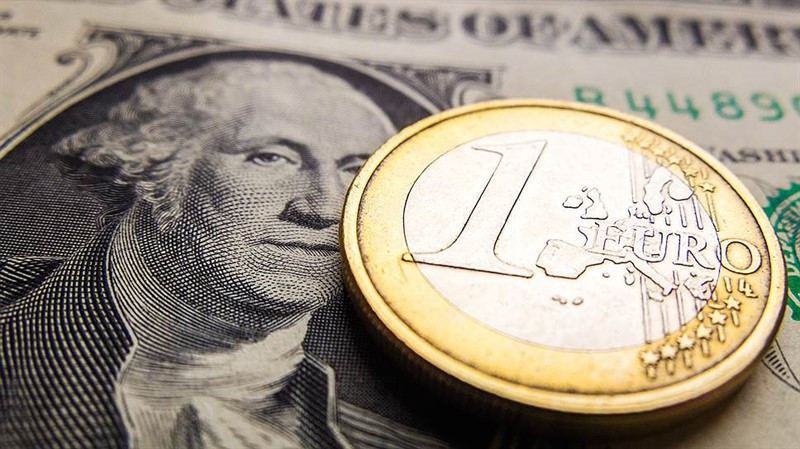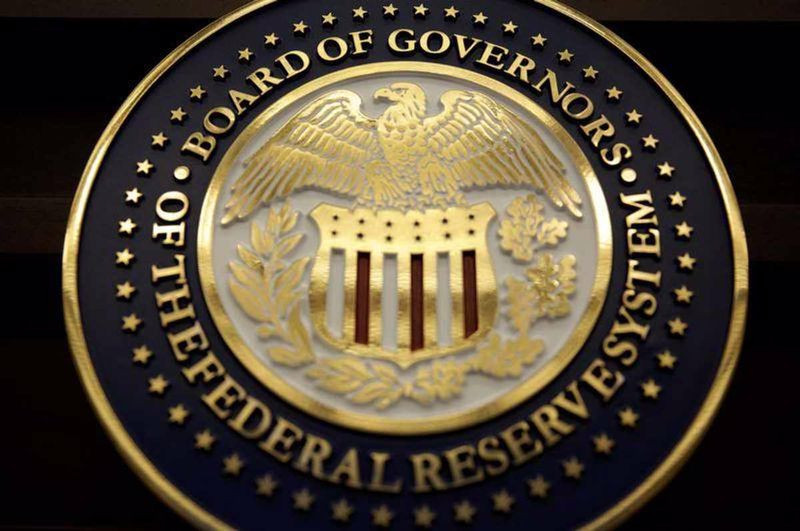The EUR/USD pair lost momentum following an impressive surge last week.
Last trading week, the euro managed to advance against its US counterpart by about 2.5%.
This remarkable performance was largely attributed to the weaker US dollar.
The massive USD selloff was triggered by the US CPI data which was released last Wednesday. The US consumer price index grew at the slowest pace since March 2021, rising by only 3% YoY in June compared to 4% in May.
On Thursday, it was announced that producer prices in the US only rose by 0.1% YoY in June, marking the smallest increase in nearly three years.
These figures fueled expectations that the Federal Reserve could conclude its monetary tightening cycle sooner than anticipated.
Consequently, the US dollar faced intense selling pressure, resulting in its biggest weekly decline since November 2022. The greenback plummeted by over 2% last week and dropped below 99.60 on Friday, hitting its lowest levels since April 2022.
As a result, EUR/USD reached its highest levels since February 2022, surpassing the $1.1240 mark.
Analysts at UBS have reiterated their forecast for EUR/USD, expecting it to reach 1.1200 by September, 1.1400 by December, 1.1600 by March 2023, and 1.1800 by June 2023.
These projections reflect the bank's belief that the greenback is poised to weaken further, as the Federal Reserve adopts a more accommodative stance while the European Central Bank remains hawkish.
While UBS strategists acknowledge the risk of the EUR/USD dropping below 1.1000, they intend to use potential pullbacks as opportunities to accumulate long positions on the pair.
The dollar experienced noticeable losses against its European rival last week, as market participants speculated that the Federal Reserve's anticipated 25-basis-point rate hike in July could be the final increase of the tightening cycle. Meanwhile, the European Central Bank may raise rates as high as 4% by September.
However, the pace of the dollar's decline moderated on Friday, with EUR/USD only increasing by 0.04%.
Investors appear to be contemplating whether the dollar sell-off has extended too far.
While overall inflation in the United States has sharply decline, core inflation surged by 4.8% on a yearly basis in June, significantly surpassing the Fed's target level of 2%.
Concerns over US consumers' continued purchasing power and their potential to reignite inflation are challenging the bullish sentiment regarding EUR/USD.
Some Federal Reserve officials have indicated that there is still work to be done in the battle against inflation, and they remain committed to raising the key interest rate twice more this year.
Worries about a deeper USD decline persist due to concerns about global economic growth.
At the start of the week, troubling news arrived from China.
The nation's Q2 GDP expanded by 6.3% YoY, falling short of market expectations of a 7.3% rise.
In June, retail sales in China grew by a modest 3.1% YoY, significantly lower than the previous reading of 12.7%.
Commenting on these figures, representatives from China's National Bureau of Statistics noted that the foundation of economic recovery was not solid.
"The data suggests that China's post-COVID boom is clearly over," Commonwealth Bank of Australia strategist Carol Kong noted.
This is hardly good news for the euro, considering that China is an important trading partner for Eurozone countries.
Furthermore, the Bundesbank recently stated that the largest economy in the currency bloc could contract by over 0.3% this year.
As a result, EUR/USD only managed to rise by 15 pips during yesterday's session, starting from the previous closing level of 1.1225.
Notably, the euro slipped to local lows around 1.1210 at the start of trading in New York, after previously reaching highs near $1.1245, the highest levels since February 2022.
Major US stock indices added about 0.5%, providing support to the EUR/USD bulls during yesterday's session.
The S&P 500, in particular, rose by 0.39%, reaching 4522.79 points, marking its highest level in 15 months.
Optimistic comments from US Treasury Secretary Janet Yellen contributed to the positive sentiment.
Yellen stated that she did not expect the US economy to enter a recession, citing a strong labor market and promising inflation data.
According to the "smile theory", the US currency typically rises during significant economic downturns or periods of robust growth, but tends to weaken during moderate economic expansions.
Lower than expected yearly inflation in the US has alleviated pressure on the Federal Reserve regarding the continuation of its rate-hiking campaign, increasing the likelihood of a soft landing scenario that would weaken the dollar.
Therefore, it is unsurprising that the US dollar struggled to attract demand on Monday and continued to trade below 1.100.
On Tuesday, the US dollar has continued to fluctuate near recent lows. While market participants are adopting a more cautious stance, it doesn't offer much support to the dollar.
However, traders seem to be waiting for economic data releases from both sides of the Atlantic ahead of the Fed and ECB meetings next week before committing to further USD selling.
"The market is pricing in 25 bps rate steps for both meetings, and our economists expect the same. The interesting question is: what will happen after that? The market hardly prices in a further rate hike for the US central bank, but not so for the ECB. From the market's point of view, the likelihood of a further rate hike in September stands at 70%, so there is potential for disappointments, particularly on the EUR side," analysts at Commerzbank commented.
"A September step can be called into question. If the market increasingly reaches this conclusion too – the ECB might even provide more concrete reasons for that next week – EUR might temporarily come under depreciation pressure," they added.
On Wednesday, the Eurozone's inflation data for June will be released. Price growth is expected to slow down to 5.5% from the previous month's 6.1%.
The ECB will closely monitor signs of inflation slowing down in the coming months to avoid a sharp rate hike, ECB Governing Council member Klaas Knot said on Tuesday.
"For July I think it is a necessity, for anything beyond July it would at most be a possibility but by no means a certainty," he said.
"From July onward, I think we have to carefully watch what the data tells us on the distribution of risks surrounding the baseline," Knot noted, adding that the ECB has been largely focused on the risk of persistent inflation. According to Knot, as the balance of risks gradually shifts, the regulator should take into account potential risks of excessive actions.
Another ECB representative, Ignazio Visco, stated on Tuesday that inflation in the Eurozone may decline faster than expected.
Vizco said that there was no need to bring the economy into a recession.
An upward movement of the pair could lead to a breakthrough into a higher trading range, such as the 1.1000 to 1.1500 zone, analysts at MUFG Bank said.
However, they also note that the pair's further growth may be limited by the Eurozone's sluggish economic growth and the possibility of the ECB holding off on rate hikes in September.
On Tuesday, EUR/USD reached its highest level since February 2022, surpassing 1.1270, but later retreated.
Today, market participants are focused on US retail sales data for June.
It is expected that the indicator will grow by 0.5% MoM in June, compared to the 0.3% growth observed in May.
However, experts at Brown Brothers Harriman caution against relying solely on retail sales figures to gauge consumer strength.
They noted that personal consumption, which includes services, will provide a more comprehensive picture but will only be published on July 28.
Therefore, the US retail sales data release may have a limited impact on the market.
However, stronger-than-expected data has the potential to revive the dollar by challenging expectations of a swift conclusion to the Federal Reserve's tightening cycle.
Conversely, disappointing figures are likely to reignite concerns about a recession in the US, putting pressure on the greenback and reinforcing market expectations of a potential pause in Fed rate hikes following the 25-basis-point increase in July.
On the technical side, according to specialists at Scotiabank, there is solid support for the euro around the $1.12 area in smaller time frames.
"The underlying tone remains bullish – based on solid DMI oscillator readings across the board – which should mean firm support on minor dips," they noted.
"There may be some resistance around the 1.1300 figure zone, but there is little major resistance to the EUR advance ahead of the 1.1500/1.1600 zone now," added Scotiabank.














